Now you can enjoy your houseplants without having to tolerate any unwanted guests. Wondering how to get rid of fungus gnats? You aren’t alone! Learn how to prevent and how to get rid of gnats in plants naturally.

There’s something refreshing about having houseplants inside your home. They breathe life into a house and also add a nice colorful flair.
Houseplants bring a wonderful, lovely dose of nature indoors where you need it most, further helping us by purifying the air in our homes.
However, at some point, you might notice some unwelcome visitors making your houseplants their home. I’m talking about fungus gnats—those annoying little flies that appear whenever you water your plants. Ugh! Do these houseplant pests plague your plant babies too?
Don’t worry, if you are having gnat problems, there are simple—and natural—ways to not only prevent but also get rid of fungus gnats in soil.
Disclaimer: First, a disclaimer. I love living things and try to support natural insects anytime I can. For example, in the outdoor garden, I work to create a natural ecosystem that supports predators for the pests that attack my plants.
Indoor plants, however, have only a few natural predators that want to kill fungus gnats – the people and pets they annoy! Unfortunately, the only reasonable way to get rid of fungus gnats in your house is to kill off the pests you have and treat your plants to prevent future infestations.
In this post, we will cover:
- What Are Fungus Gnats and How Do They Get in the House?
- Why Are Fungus Gnats Bad?
- When Are You Most Likely to Find Fungus Gnats?
- How to Get Rid of Fungus Gnats
- Make the Natural Habitat Inhospitable
- Use a Soap-and-Water Mixture
- Use Sand or Gravel
- Dispose of the Top Layer of Soil Outdoors
- How to Prevent Fungus Gnats
- Don’t Overwater Your Houseplants
- Water From the Bottom
- Store Extra Potting Soil in an Airtight Container
- Now That Takes Care of Gnats, but What About Other Houseplant Pests?
- Love houseplants? These Posts Are Great Reads
What Are Fungus Gnats and How Do They Get in the House?
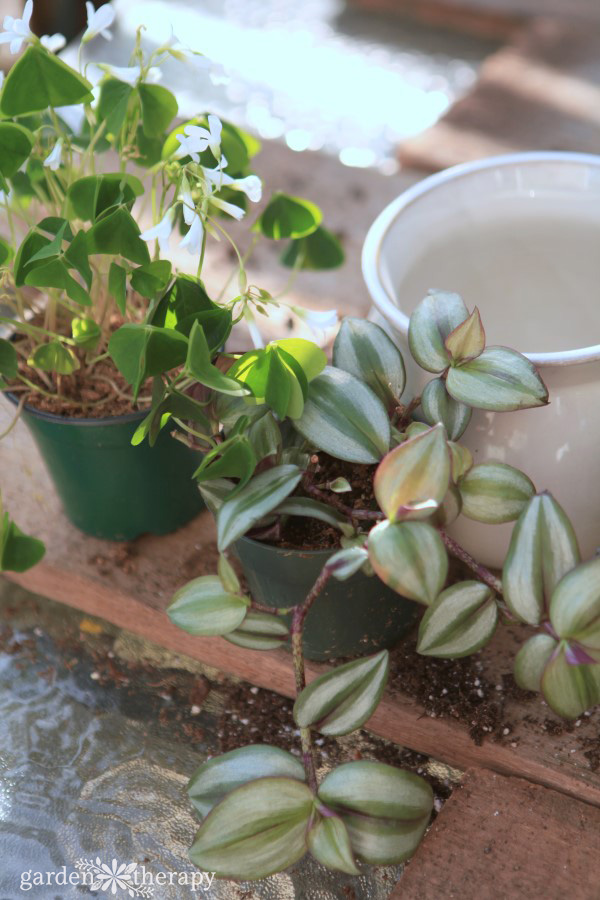
Fungus gnats, also known as soil gnats, are small dark insects that look similar to fruit flies and live in the soil of houseplants. When you have them, you will notice them when you water your plants or disturb the soil in other ways.
One way to get fungus gnats is to leave your houseplants outside. Most often, though, they come straight from the nursery. You don’t realize it because they hide in the soil until you bring them home unknowingly.
Their larvae eat plant roots and fungi in the soil. Then they suddenly appear in houseplants after the larvae hatch.
Why Are Fungus Gnats Bad?
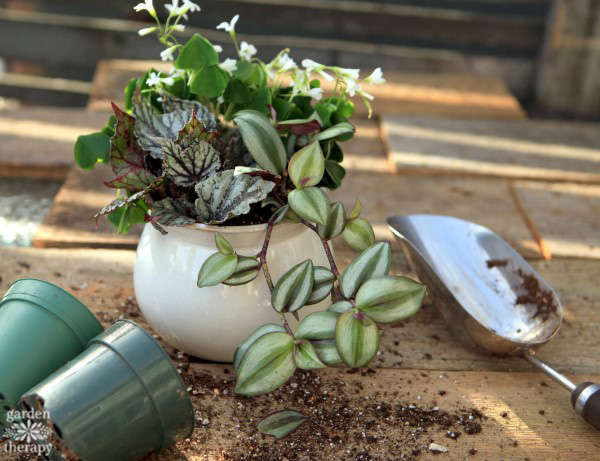
While these pests are a nuisance in noticeable numbers, it might be comforting (on some level) to know that the adults are harmless insects that do not bite.
Also, they don’t do much damage to strong, healthy plants, but they can cause wilting yellowing leaves, stunted growth, and even death in seedlings and more fragile plants.
But honestly, nobody wants a swarm of gnats flying in your face every time you water your houseplants. Yuck.
When Are You Most Likely to Find Fungus Gnats?
Nuisance problems with fungus gnat adults tend to be most noticeable during late fall and winter, for a couple of reasons:
- Houseplants that live outdoors during warm months will commonly start breeding fungus gnats. When these plants are brought indoors, populations may increase due to the warmer temperatures found in homes.
- People are indoors more during the colder months, making it easier to notice an infestation.
How to Get Rid of Fungus Gnats
Killing off soil gnats is really not very difficult, and thankfully, you don’t need to bug bomb your home (yay). It all has to do with disrupting their life cycle and making your home inhospitable for these pests. Here’s how to naturally treat your houseplants and get rid of gnats in the soil.
Make the Natural Habitat Inhospitable
Fungus gnat larvae need moist soil to survive. By letting it dry out completely before your next watering, it will get rid of the gnats in the soil and discourage new adults from laying fungus gnat eggs, thus effectively cutting out the larval stage altogether.
Use a Soap-and-Water Mixture
Take a cup of water and add a few drops of liquid dish soap or liquid Castille soap. Use a spray bottle to spray the top of the soil with this to kill the larvae. Repeat this process again in a few days to ensure that you have killed all of the larvae.
While some people recommend vinegar traps, I have found the soap and water to be more effective. Vinegar (and in particular a bowl of apple cider vinegar) is better suited for making a fruit fly trap.
Use Sand or Gravel
Fungus gnats only lay their eggs in the top inch of soil. Replacing that top inch with sand or gravel creates a dry environment and robs them of nutrient-rich fungus to munch on. Without their needed source of food available, they won’t want to lay their eggs.
You can also use pretty decorative aquamarine rocks and add a splash of color to some of your favorite plant babies.
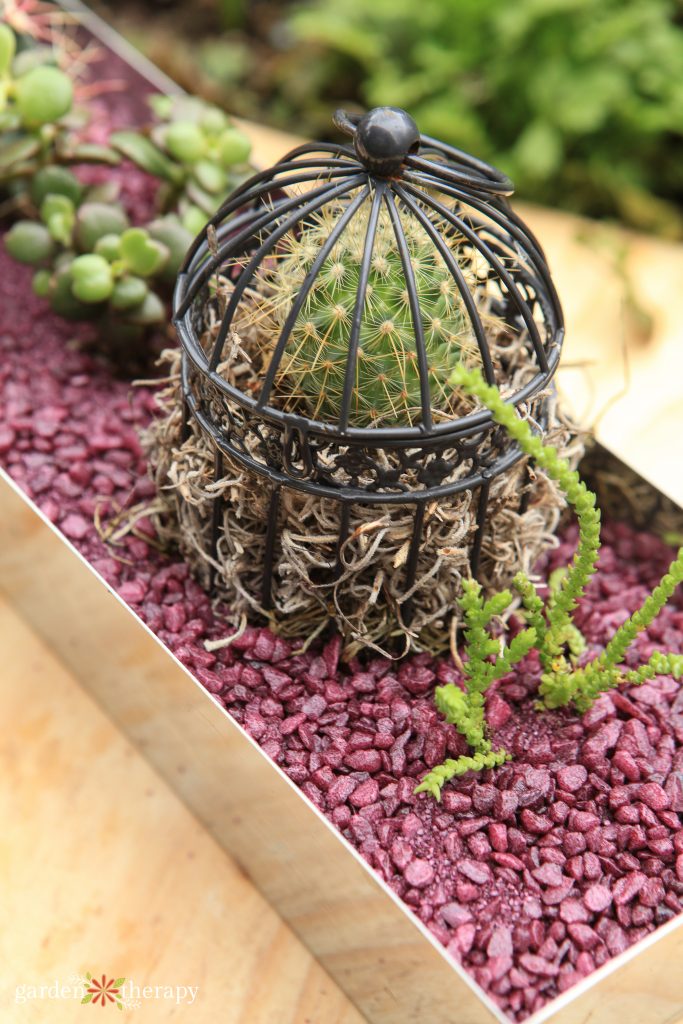
Dispose of the Top Layer of Soil Outdoors
The eggs can still hatch. Let them hatch outside rather than somewhere in your home. You don’t want to just move your pests from one part of the house to another.
By taking all of these steps, you can naturally control and prevent fungus gnat infestations.
How to Prevent Fungus Gnats
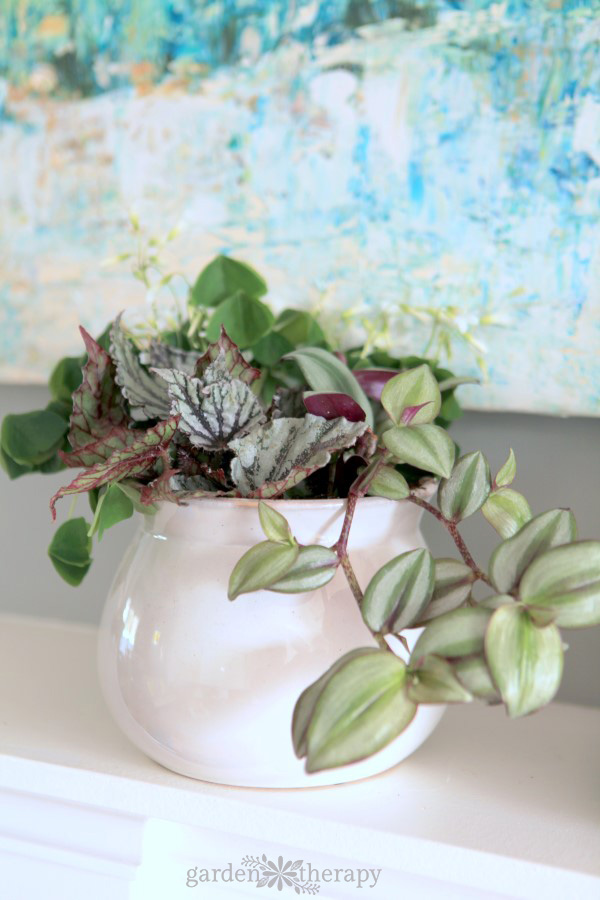
Let’s chat about the steps you can take to prevent these annoying pests from ever entering your life in the first place!
Don’t Overwater Your Houseplants
Make sure you aren’t overwatering your plants. Moisture is a big plus for gnats, so to make their new environment inhospitable, you need to let the soil they live in dry out completely.
Neither adult gnats nor their larvae can survive in dry soil, so let your soil dry out completely between watering as often as possible. Here’s an entire guide devoted to teaching how to water your houseplant properly.
Water From the Bottom
Bottom watering will help the topsoil (where the gnats lay eggs) stay dry while keeping your plants hydrated and happy.
Store Extra Potting Soil in an Airtight Container
If you keep your potting soil in the bag it comes in, fungus gnats can easily get in and lay their eggs. However, the eggs need air to survive, so airtight containers like buckets with tight-fitting lids will keep gnat larvae at bay.
Now That Takes Care of Gnats, but What About Other Houseplant Pests?
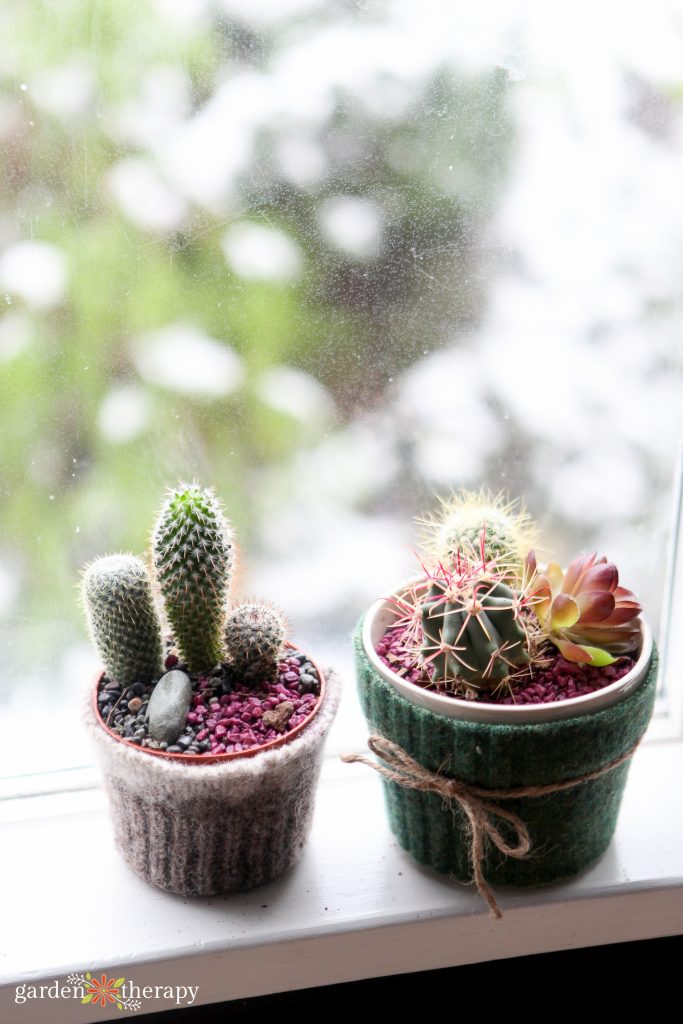
Expert David Squire popped by as a guest of Garden Therapy to share information on 8 of the other most common indoor plant pests and how to get rid of them. He has some great tips and tricks here for getting rid of houseplant pests!
Love houseplants? These Posts Are Great Reads
- How to Prevent, Identify, and Get Rid of 8 Common Houseplant Pests
- The Best Houseplants for Low Light
- These Aren’t Your Grandma’s Houseplants! Indoor Plant Projects for Modern-Day Decor
- Houseplants as Biofilters: Do Indoor Plants Really Purify The Air?
- Houseplants that are Poisonous to Pets: How to Keep Your Fur Babies Safe

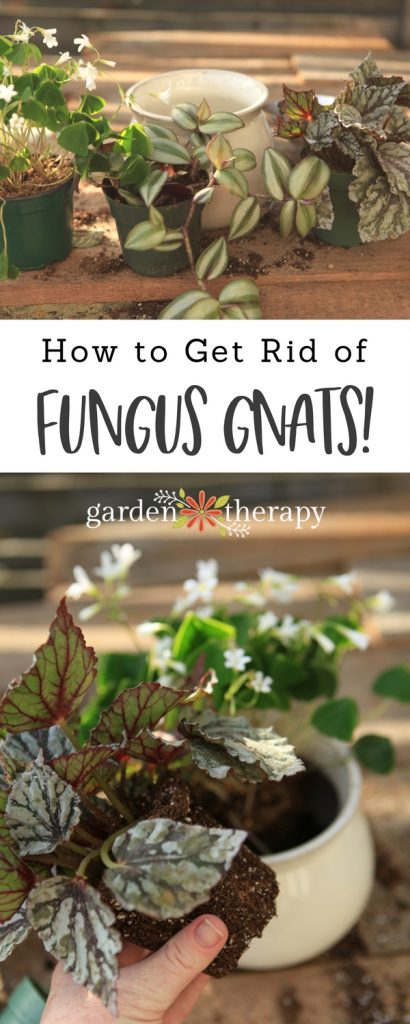
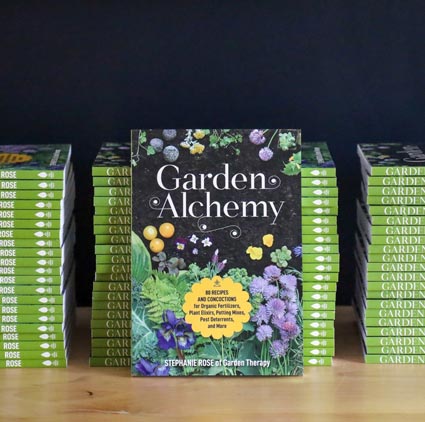


I really appreciated this article. It’s very quick and straight to the point. The solutions are very simple and I’ve already noticed the gnats starting to go away. Thanks!
yesss! that’s great!
Hi I have been battling with gnats for a while now and can’t seem to get rid of them. I’ve tried spraying with soap & water & have also put gravel on the top of the soil in the plant pots, but they keep coming. Any ideas would be appreciated as they fly around me while I’m working and drive me mad! Thank you
Did you ever get rid of the gnats? Please let me know how. ryndeb4@yahoo.com
They are really bad at my place I have orchids & African violets inside so like you tried what u have didn’t work so I’m going to try water amongst plants with that soap they suggest above in commends then also water from bottom , wish me luck
Stephanie,
Thanks so much for posting how to get rid of fungus gnats. I love basil and buy one every year and frow it outside. The earwigs love basil more then me and would chew the leaves and destroy the plan. So last fall when I bought a basil plant I put it inside my home to grow. It did well but I started to notice fungus gnats. They moved to my houseplants plants. I had a full blown infestation during the winter. I searched the internet for help and found your website. Watering the plants from the bottom as you mentioned really helped. For larger plants I put them into a dishpan half full of water for a few hours or overnight and this helped them get the water they needed and it kept the soil dry on top. I especially liked the suggest about adding a few drops of dish soap to water. My husband bought bought 4 reusable fruit fly traps with the cider vinegar mixture. This did not work becaues we were not dealing with fruit flies however, I added water and 1 small drop of dish soap instead of using the cider vinegar mixture and I placed the traps where fungus gnats were seen most often. After a day or two I would find many of them floating dead in the soap mixture. This hepled tremendouly. Over the last 2 months the fungus gnat population has been reduced to almost zero so I started watering my plants from the top again and used your excellent recommendation to make a spray using a cup of water and a few drops of dish soap. What I did is water my plants from the top and let the water absorb through the soil, then I sprayed the top of the soil with the soap mixture. I followed up a few days later as suggested. I haven’t seen a fungus gnat so far. My basil plant will stay outside this year! I plan to shake some chili powder or cayenne pepper on the basil leaves to send the earwigs packing!
I had fungus gnats years ago and couldn’t remember how I got rid of them. I thought I used a little white vinegar with water in the spray bottle but it’s been a long time so I’m not sure if I’m remembering correctly. Would that work to kill them? I don’t know if it would damage the plants. I also used whatever the mixture was in the drains at night because I think they like to hang out wherever there’s water. Thanks for your post and any further advice!
I found that microwaving new Potting soil, kills the gnats. I heat the soil in a glass shallow container, until warm. I let it set until cold. Before I use it. The coca fiber that comes with amaryllis. Responds really well, doing that.
I have a question, so … before putting a seed is better to dry off the soil to make sure no larvae is in the soil? Once the soil is totally dry I can plant my herb seed? Last Summer I start my mini herb selection and ohh goodness those gnats kill my beautiful basil it was disappointing.
I just want to do the righ thing from the beginning this summer and take care of my future herbs.